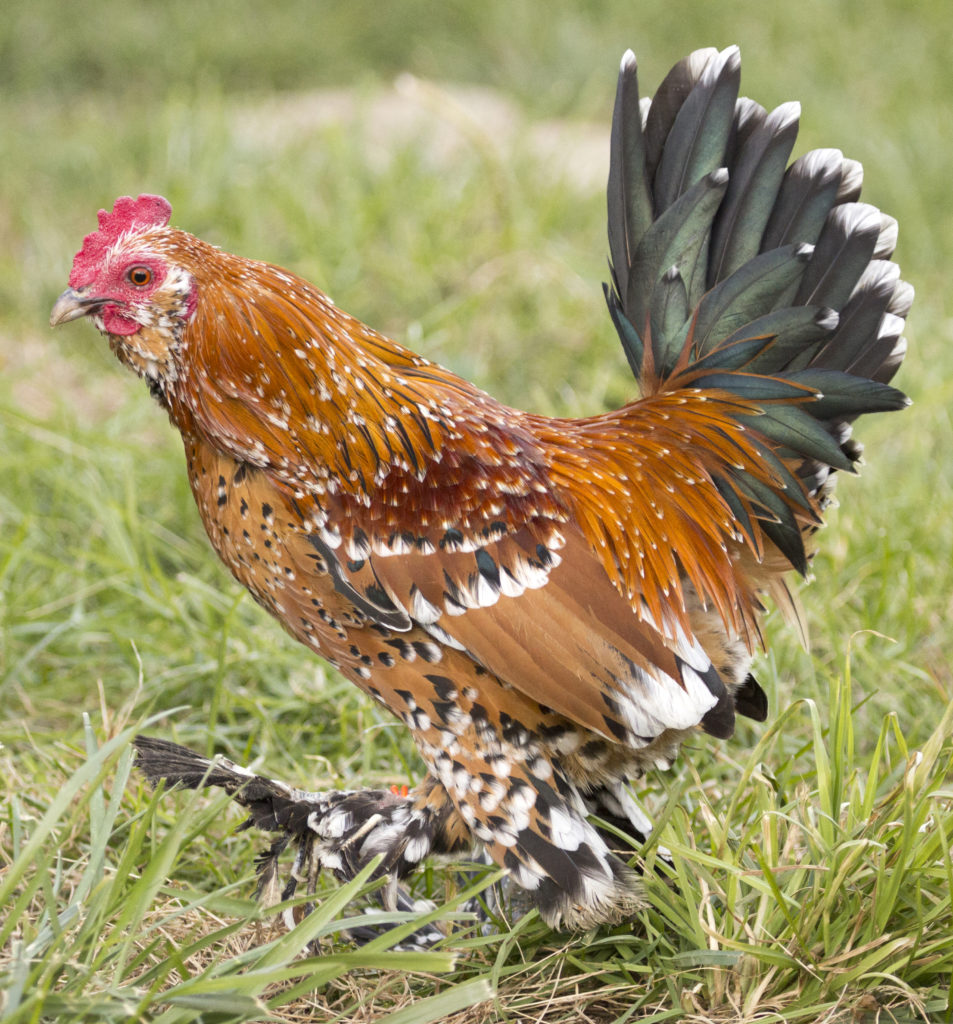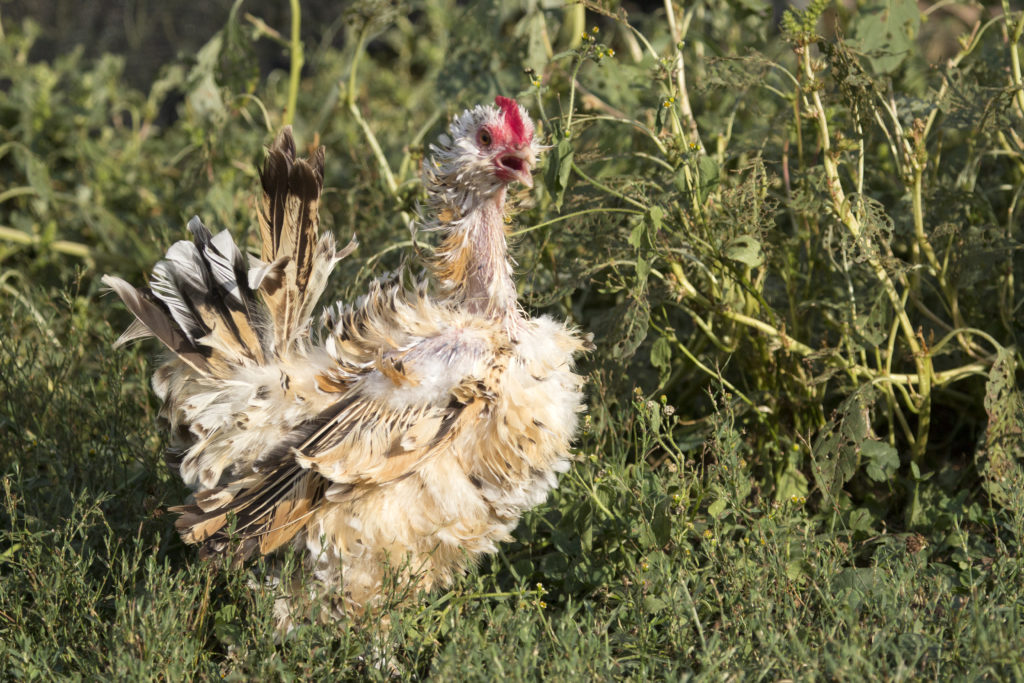Part of our Breed Profiles series, the Mille Fleur d’Uccle is a feather variation of the Belgian bearded or Barbu d’Uccle bantam chickens.
Mille Fleur (Million Flowers) d’Uccle bantams are truly gorgeous, small chickens with speckled, orange plumage.
History
A variation of the Belgian d’Uccle bantams, they are true bantams without a larger counterpart. These feather-footed and bearded chickens originated in northern Europe, bred from the kind of small chicken mentioned in Ulisse Aldrovandi’s 1600 edition of Ornithologica.

Mille Fleur d’Uccle hen. You can see that her feathers grow all the way down her leg, and from the outer toes of her feet. (Photo by J.Z. Hunt)
Michael van Gelder, a Dutchman living in Brussels, is credited with developing the d’Uccle breed in the early twentieth century and began showing them in 1905. The first Mille d’Uccle variety was added to the American Poultry Association Standard of Perfection in 1914.
Characteristics
The Mille Fleur, like all Barbu d’Uccle bantams, is a low, broad bird with a short neck, and short feathered legs. They have a single comb and red-orange eyes. Feathers or “beard” around their head and neck give their head a round appearance. These small birds have four toes and the outer toes are feathered. Cocks have a pronounced comb and wattle while hens have a small comb and almost non-existent wattle.

The Rooster on the right is a mixed breed bantam and Mille Fleur bird. You can see the speckled feathers, but not the typical d’Uccle beard. The Hen on the left clearly shows the fluffy beard and muff head feathers.
They are raised primarily as show birds, though lots of families keep them also because they are friendly, talkative birds. The roosters are quite talkative and tend toward a high-pitched crow.
Cocks typically weigh 1 pound, 10 ounces (740 grams) while hens and cockerels average 1 pound, 6 ounces (625 grams). The hens lay around 160 small, white eggs a year, tend toward broodiness and are attentive mothers. They will often lay through the winter months and molt in the spring.

Not even the Mille Fleur can maintain it’s elegance when molting.
Health and Safety
They are, in general, quite healthy birds with no outstanding congenital health issues. Because of their leg feathers, they can get scaly leg mites, but respond well to treatment. These small birds do have a fairly high metabolic rate, and so aren’t fond of winter. Make sure that they have an insulated and breeze-free coop for colder weather.
Many U.S. hatcheries carry this bird (though sold only has chicks, not hatching eggs) and it is also available in both Europe and Australia.
If you’d like to learn more about this delightful and beautiful, feathery handful, here are several helpful online resources:
The British Belgian Bearded Bantam Club
https://www.britishbelgianbantamclub.org
The Dutch Rare Belgium Bantam Breeders Club
http://www.zobk/nl/
Belgian d’Uccle and Booted Bantam Club
http://www.belgianduccle.org/belgian-duccles.html














3 Comments
How old do the hens get to be ?
I have one hen that is an extremely spunky small white bird.
She is about 5. Her sister died of unknown causes at age 2.
hen live about 4-10ish years chicken sliders checks and some guy that one or two-years-old it just a matter of how well you keep them and how healthy is there are
sorry miss type I meant to say some of my chickens lived till they were chicks and then died and some were one or two